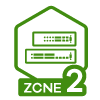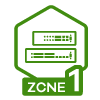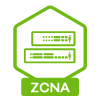What is a good 5G Cellular Signal of mobile router?
 Zyxel Employee
Zyxel Employee



For a reliable 5G connection, monitoring signal parameters like RSRP, RSRQ, and SINR is essential. These values help determine signal quality on mobile router devices.
Navigate to Cellular Info to view details like Signal Strength, RSRP, RSRQ, SINR, Access Technology, and Cell IDs.
Optimal Signal Values:
For the best performance, aim for Excellent or Good ranges in RSRP, RSRQ, and SINR.
More information:
Signal strength
The signal strength value indicates the level of the signal received by the modem. These values correspond to the RSSI (Received Signal Strength Indication) readings of the connection. The value is measured in dBm (dBm).
RSRP (Reference Signal Received Power) - the average power of the received pilot signals (Reference Signal) or the level of the received signal from the Base Station. The RSRP value is measured in dBm (dBm). The signal strength of the modem can also be determined using the SIGNAL STRENGTH indicators on the top panel of the device. The maximum level correspond to the three burning indicators. If no indicator is lit, then the signal strength is insufficient to connect to the network. With RSRP = -120 dBm and below, the connection may be unstable or not installed at all.
RSRQ (Reference Signal Received Quality) - characterizes the quality of the received pilot signals. The RSRQ value is measured in dB (dB).
SINR (Signal Interference + Noise Ratio) also called CINR (Carrier to Interference + Noise Ratio) is the ratio of the signal level to the noise level (or simply the signal-to-noise ratio). The SINR value is measured in dB (dB). It's simple: the higher the value, the better the signal quality. At SINR values below 0, the connection speed will be very low, since This means that there is more noise in the received signal than the useful part, and the probability of losing a connection also exists.
Access Technology
This determines what kind of connection technology the device currently uses, there are a few main technologies used; 3G, LTE, NSA, and SA. NSA is a combination of LTE and 5G and SA is the "pure" 5G. With NSA and SA usually, NR stands in front of this.
The “Non-Stand Alone” (NSA) architecture, where the 5G Radio Access Network (AN) and its New Radio (NR) interface is used in conjunction with the existing LTE and EPC infrastructure Core Network (respectively 4G Radio and 4G Core), thus making the NR technology available without network replacement. In this configuration, only the 4G services are supported, but enjoying the capacities offered by the 5G New Radio (lower latency, etc). The NSA is also known as “E-UTRA-NR Dual Connectivity (EN-DC)” or “Architecture Option 3”.
The “Stand-Alone” (SA) architecture, where the NR is connected to the 5G.
Only in this configuration, the full set of 5G Phase 1 services are supported.
Cell ID & Physical Cell ID
These stand for the physical cell ID the device is connected to, in some cases, you might want to connect to a specific mast that is further away than the closer one to have a less crowded mast. The information on this can be usually obtained from the ISP.
Categories
- All Categories
- 441 Beta Program
- 2.9K Nebula
- 208 Nebula Ideas
- 127 Nebula Status and Incidents
- 6.4K Security
- 529 USG FLEX H Series
- 333 Security Ideas
- 1.7K Switch
- 84 Switch Ideas
- 1.3K Wireless
- 51 Wireless Ideas
- 6.9K Consumer Product
- 292 Service & License
- 461 News and Release
- 90 Security Advisories
- 31 Education Center
- 10 [Campaign] Zyxel Network Detective
- 4.7K FAQ
- 34 Documents
- 86 About Community
- 99 Security Highlight
